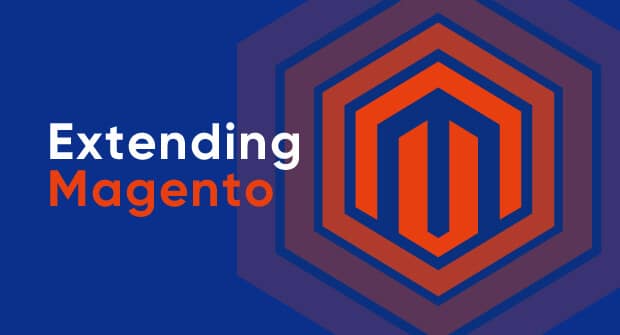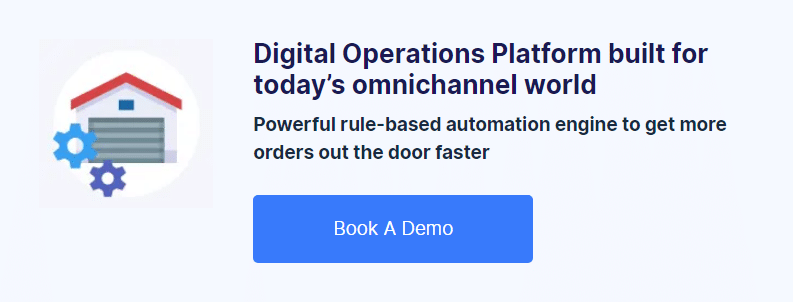Extending Magento – How to optimize your Magento store

Magento is the perfect platform to design a great customer experience!
Magento is our go-to recommendation for any business that wants full control of their webstore in terms of performance, customization, and functionality. Magento is open source, which means that it can be extended to your heart’s content, as opposed to hosted solutions which are often under lockdown. Alongside great technology, they have a thriving community of apps, developers and a very useful resource library for any e-commerce retailer.
Magento is a great platform, but it’s not without its limits. It’s not designed for sales order fulfillment, managing purchase orders with vendors, or full warehouse operations. There are utility apps for most things that can extend your store far enough to simply add one or two features each – this is fine for improving the shopping experience, but can quickly strain your business when it comes to wider operations.
Over the years, we’ve seen hundreds of businesses who have attempted to survive by stitching together Magento admin, point of sale solutions and spreadsheets. The inevitable results are that opportunities are missed due to limitations, mistakes are made due to the lack of consolidated information and admin costs rise as complexity increases. Luckily, there are dedicated back office systems that thrive in delivering solutions to the growing pains of an omnichannel retailer. In this guide, we’ll be working through some of the core activities that are best placed in a back office solution, and how to ensure Magento is empowering your business, rather than hindering.
What’s in the guide?
There are core activities involved in your business that are best placed in back office retail systems, like Brightpearl to ensure Magento is helping to grow your business, not hinder. These core operations include (but are not limited to):
- Inventory management
- Fulfilling sales orders
- Growing as an omnichannel retail business
- Point of sale transactions
- Processing wholesale orders
- Consolidating operations
- Accounting and financial control
Read on to find out how you can extend your Magento platform and start automating these retail workflows and core business operations.
Magento inventory management
Like most e-commerce platforms and inventory management systems, Magento has the ability to track inventory levels on a per SKU basis, which is a great first step to maintaining accurate inventory levels and limiting overselling when starting out. However, once you start to scale up, you’ll find it starts to show its weaknesses, such as managing multiple locations (e.g. opening a new warehouse or store) of inventory per SKU (since Magento does not have nor need the concept of multiple inventory locations).
This can cause a few issues:
- Having to track inventory spread across locations in a spreadsheet or externally. This quickly leads to stale and inaccurate data across systems.
- Difficulty in correctly replenishing products across your different branches.
- Partial fulfillments out of multiple locations leading to significantly increased shipping costs.
Multi-location inventory management is a complexity in Magento that can be eliminated by using a dedicated back office system with strong inventory management. A back office solution should facilitate the multiple pools of inventory, combining them to generate a product’s combined availability and then pushing that to Magento in real-time. When orders are placed, the solution can then takeover once again and route the fulfillment requests to the right team and inventory location.
Fulfilling Magento orders
If you’re handling a few orders a day, then Magento’s ability to print an order and use that printout as a packing note will not cause major problems and is actually a fine way to get started as a merchant! However, if you’re starting to see hundreds of orders per month, your warehouse team need a tool with built-in warehouse management workflows to avoid mispicks, missed orders and a slow fulfillment process.
A few functions to look for that can rapidly improve your fulfillment are:
- Consolidated picking lists to efficiently process batches of shipments rather than one-at-a-time
- Barcode scanning to speed up order verification and reduce errors
- Channel specific packing slips to ensure desired branding across Magento, Amazon, Wholesale and more
- Product tracking by location (i.e. aisle, bay, shelf and bin)
Without these features, warehouse teams are hindered and typically work at a slower pace in an effort to mitigate errors as best as they can – costing you more in processing time; or even worse, they maintain speed and make mistakes, leading to lost customers and potentially negative customer reviews.
Along with increased order volumes, managing multiple fulfillment efforts can quickly become unmanageable within the admin panel of your webstore. Magento doesn’t have the native ability to acknowledge multiple warehouses, partial fulfillments, drop-shipments and other standard fulfillment practices for an omnichannel merchant. This typically leads to spreadsheets, inaccurate data and missed orders.
Any good inventory and order management tool will have the basics of warehousing and order fulfillment covered – picking up orders from Magento as they’re made, filtering them through to the appropriate fulfillment streams, facilitating the order assembly through dedicated pick-pack-ship workflows, and then updating Magento with progress and tracking references.
Going omnichannel
All our most successful companies operate multiple sales channels, and in our eyes, Magento is an ideal e-commerce solution to cement an omnichannel strategy. In a study of 46,000 consumers by the Harvard Business Review, 73% of people used multiple channels before purchases and omnichannel experiences lead to 23% more repeat customers.
Magento’s core features of creating multiple websites, stores and store views, mean that you’ve got a very efficient way of creating new brands or opening up a new territory. Continuing the theme here, Magento have got all the front-end tasks covered, but where they won’t be helping you is with the logistical implications of doing this.
Consider order fulfilment – when you make the move to multiple brands, you need that branding to survive all the way from checkout to the time your customers open the package. Additionally, when setting up new territories, you’re likely to be setting up new fulfilment operations to support them, perhaps outsourcing this new venture to a third party logistics company to avoid international shipping costs. A centralized order management platform will take orders from each and every channel, and route the orders to the right team – and most importantly, won’t require a website change.
POS
When we refer to ‘sales channels’, we aren’t specifically referring to online webstores and marketplaces – physical stores, reps on the road and telephone order representatives count too! When it comes to physical stores, you’ll need to equip them with a Point of Sale (POS) solution as their means of taking orders and issuing returns.
Some businesses make the mistake of thinking that just because you can manually create orders in Magento’s admin area, that will serve the store staff. In-store operations are unique to their environment and should be handled as such. Dedicated POS software systems are streamlined to power through workflows as quickly as the store clerk can drive them, meaning customers never have to wait for things to load. POS solutions also care for all of the other necessities of running a store. Does Magento care how much float you opened your till with this morning? How about manager vs store assistant permissions? (You really don’t want to grant your saturday staff access to your webstore backend do you)?!
Wholesale
B2B is a key area of growth for the e-commerce industry. Net payment terms, settlement discounts, customer specific pricing were once only possible in complex enterprise platforms. Magento complemented with an integrated accounting platform is flexible enough to allow you to take your wholesale business online – decreasing the number of staff and time required to complete high value wholesales orders. This will free you up to focus on developing new business opportunities and marketing instead of trying to manage your current customer base.
Consolidating operations
Magento is not at all designed to be a full retail management platform, which means you could be missing out on your system handling core retail operations in your business for you. You should be looking forward to freeing up your time to focus on growth activities – here are just a few areas that Brightpearl allows you to do just that.
Automating tasks
Integrating an order management platform with Magento allows you to establish automated processes for processing orders. Allowing you to focus on the 5-10% of orders that raise exceptions as opposed to every order placed, helping increase the profitability of each sale. An order management tool should also post inventory updates automatically back to Magento, preventing overselling and removing the manual tasks of keeping inventory levels accurate.
Centralizing contacts
If you sell anywhere other than Magento, you will run into customer data management problems. Where should your centralized database of customers be? How do you track a single customer interacting with your brand on multiple channels and updating their information? You will either likely concede not having a central customer database or spend time and resources loading contacts into Magento or a CRM system. A retail management platform allows you to consolidate all of your customer information into a single platform automatically. Instead of wasting time building your database, you can spend time analyzing your customer demographics and implementing targeted marketing campaigns.
Channel branding for customer experience
A great customer experience is one that never leaves the customer having a feeling of ambiguity – such as wondering when they’re actually going to receive an order, or if there are any actions still with them to complete. For an omnichannel retail business, it’s imperative that the customer is rewarded with identically high levels of customer service, no matter where they bought their products.
Letting Magento focus on the selling and putting in an order management platform that’s consolidating your various Magento store activities along with your marketplace and telephone sales, doesn’t have to mean that all of a sudden, customers receive the same paperwork and email notifications. A good platform will allow you to customize the documents, text and anything else that’s customer-facing to be consistent with the sales channel they arrived from, all whilst empowering you with a system to internally handle all of the orders en masse.
Accounting and financial control
Magento is not at all designed to be an accounting platform, and likewise, popular accounting packages like QuickBooks or Sage were not built to cater to online retailers. This can quickly lead to delayed or inaccurate financial information, which prevents you from making real-time data driven decisions. Here are just a few areas that Brightpearl accounting allows Magento companies to be more successful.
Accurate profitability
The profitability of products purchased overseas or with variable costs can be nearly impossible to track in a system without inventory cost accounting and landed cost. As orders are placed in Magento and then shipped using Brightpearl, all the necessary accounting entries are posted to accurately track the profitability of each sale and the business overall. Landed cost tracking allows you to include costs like ocean freight or insurance into the cost of goods of each product, providing a more accurate view on profitability.
Overheads
By consolidating your Magento sales data into your accounting platform, you will be able to see your profitability relative to all your business overheads. This will give you the time to focus on identifying performance issues in your business and opportunities for reducing costs, instead of consolidating information into spreadsheets or QuickBooks.
In summary…
Magento and Brightpearl form a cohesive technology stack for e-commerce businesses to focus on execution instead of conforming to their systems. Magento’s front end flexibility gives you complete control over your customer shopping experience and product catalog, and Brightpearl allows you to flexibly ship those products to your customer, all whilst automatically tracking your accounting and customer data.
To find out more, check out our Magento connector demo video.

